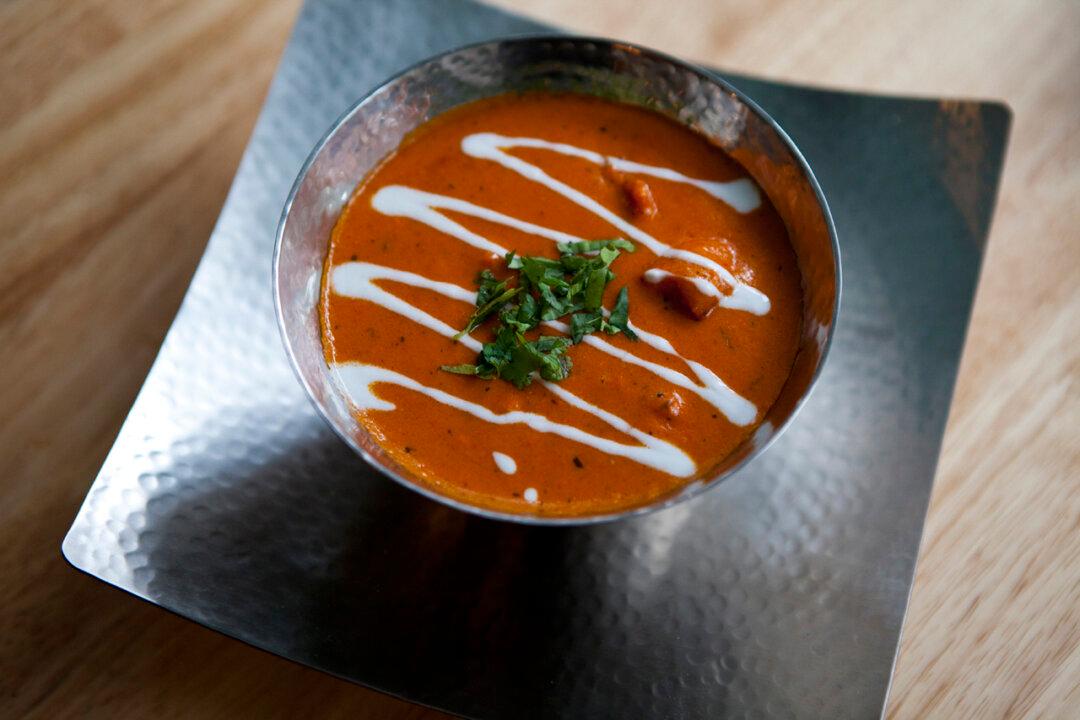I was immediately captivated by the unusual, yet luxurious setting at this restaurant, a recreation of 17th century Japanese farmhouse. Robatayaki, meaning grill, originated in Japan’s Miyagi Prefecture. The original mode of service and eating had diners sitting around an open hearth at counter stools, while chefs sat on a deck, with only the grill as a divider between them and the carefully selected and displayed produce, fish, and meats arranged on a counter.
Here in New York, once inside the venue, a few more steps through a minute garden lead into the adjacent room, transporting one into yet another part of Japan—into one of Kyoto’s old merchant houses known as Matchya. They used to serve a dual purpose: The front of the house is used for business and the remainder is the living quarters. Wooden booths line the edges of the room. Bamboo-and-trompe l’oeil wallpaper featuring windows and bamboo give the illusion of overlooking a neighbor’s garden.
Surrounded by such eye-pleasing scenery, the menu is also memorable: a fare of traditional Japanese cuisines, with only one or two fusion offerings. The chefs prepare cold and warm appetizers, fried and simmered dishes, rice and noodles, and, of course, the main attraction: the grilled foods, robatayaki. This selection, bursting with the ingredients’ natural flavors, uses only imported Noto Sea Salt, fresh sudachi, redolent of sharp citrus and acidic flavor, and fresh wasabi.
Service in this vibrant atmosphere is warm and friendly. A seemingly endless selection of sake is available.



